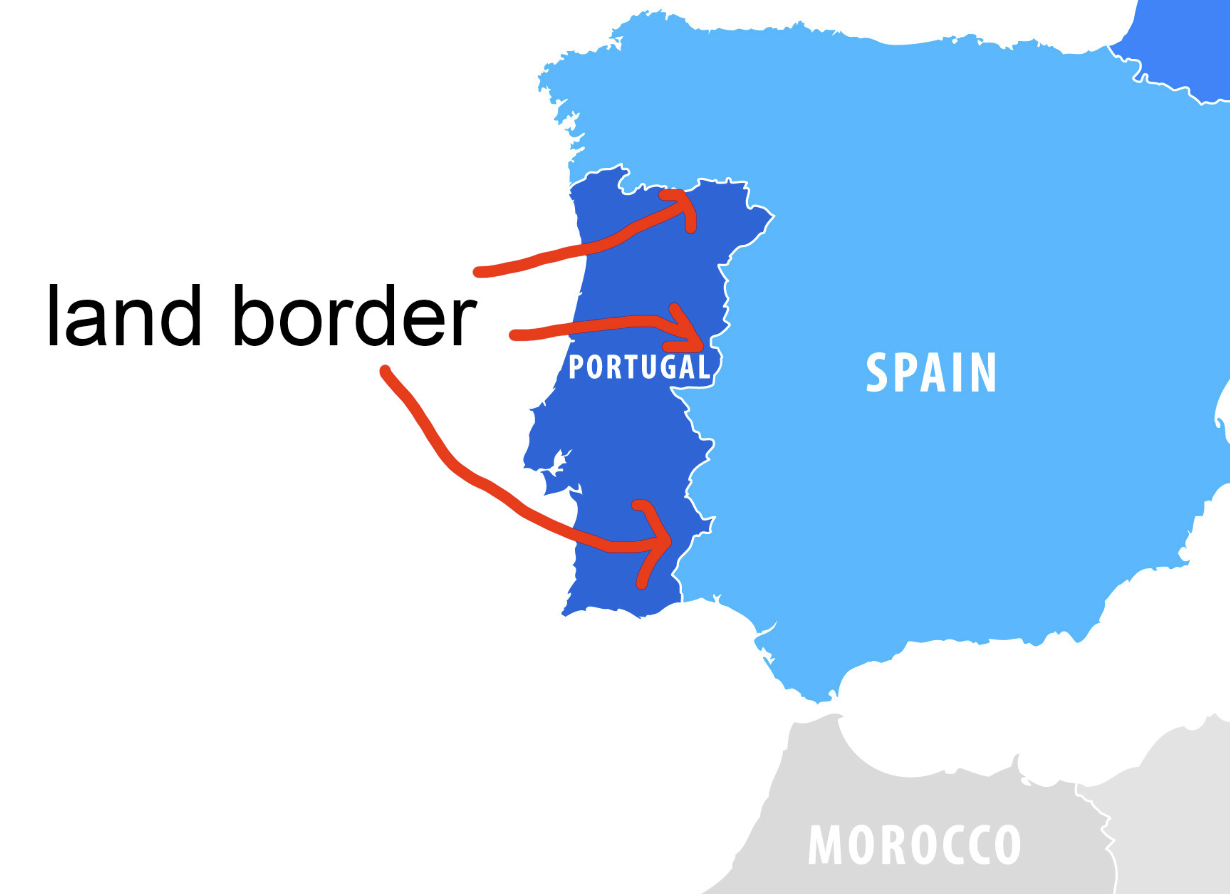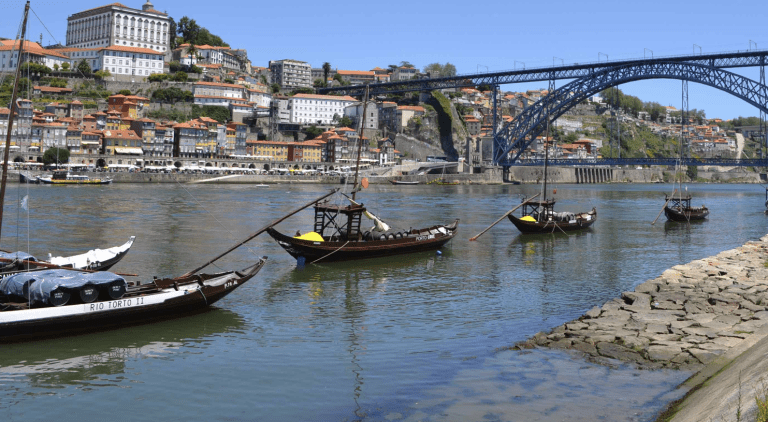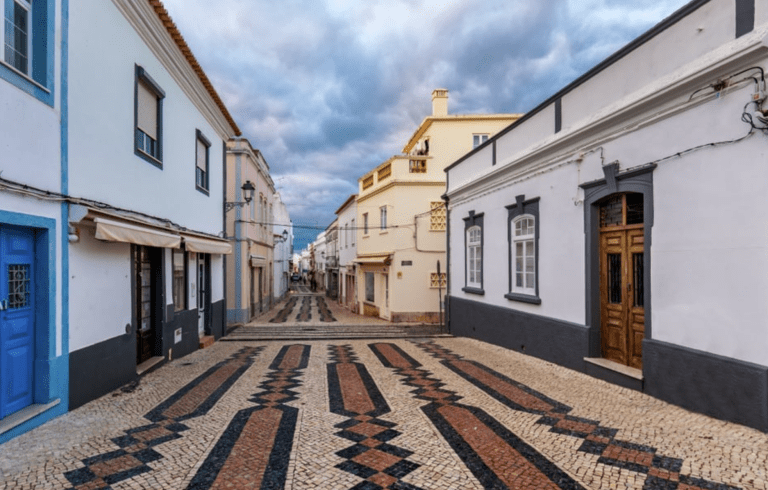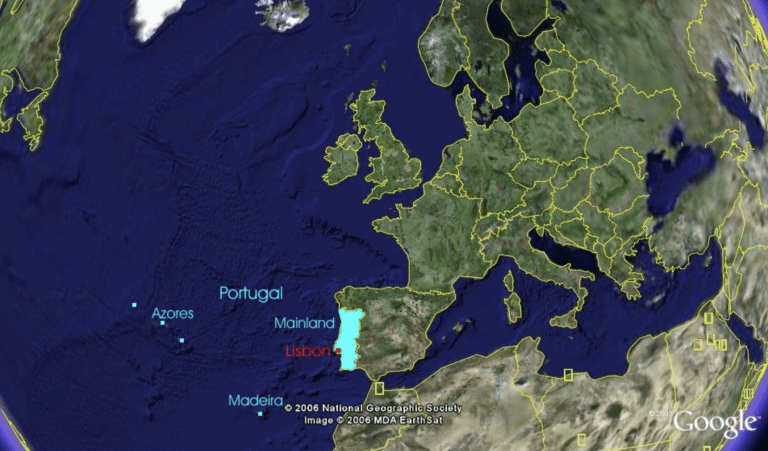When we consider the question, “what countries border Portugal?” there’s only one answer: Spain. Nestled on the Iberian Peninsula in Southwestern Europe, mainland Portugal shares its entire land boundary with this neighboring nation.
This blog post will delve into the fascinating aspects of this unique geographical relationship. You’ll learn about the length and origin of the Portugal-Spain border and how it has been impacted by agreements within the European Union like Schengen.
We’ll also take a journey along notable features lining this shared frontier, including districts, provinces and distinctive crossing points. As part of our exploration into “what countries border Portugal”, you won’t want to miss our coverage on territorial disputes over regions such as Olivenca.
Lastly, we will touch upon life alongside this singular boundary line – from frequent travel between both nations to cultural similarities that extend beyond physical borders. So let’s embark on this enlightening journey together!
Portugal’s Unique Border with Spain
Portugal, the southwestern corner of Europe, has a border with only one country – Spain. This border stretches an impressive 754 miles and starts from the disputed Olivenca region. Despite both countries being part of the Schengen Agreement, which allows free movement, there have been temporary reinstatements for security reasons.
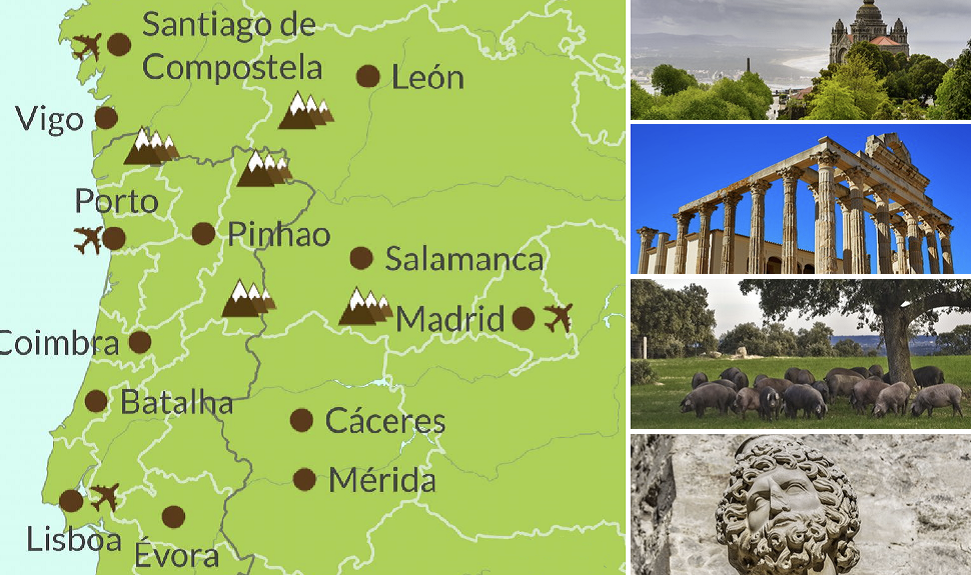
The Length and Origin of the Portugal-Spain Border
The Portugal-Spain border, known as ‘A Raia’ in Portuguese and ‘La Raya’ in Spanish, is one of Europe’s longest uninterrupted borders. It begins at the northernmost point near Cerveira and heads southward, ending at Castro Marim by the Atlantic Ocean. The border’s origin can be traced back to historical treaties like the Treaty of Alcanizes (1297), but it has undergone modifications due to political changes and territorial disputes.
Impact of the Schengen Agreement on this Border
In 1995, Portugal and Spain ratified the Schengen Agreement, removing mutual frontier controls. This agreement revolutionized travel in Europe, creating passport-free zones for easy cross-border movements. However, temporary checks have been reintroduced during major events or heightened security threats, such as Euro Cup football matches or terrorist attacks.
While enjoying the benefits of Schengen zone membership, such as freedom of movement, both countries also share the responsibility of maintaining border integrity against illegal immigration and smuggling activities. This sometimes requires the temporary re-establishment of internal checkpoints.
Notable Features along the Portugal-Spain Border
Traveling across borders is intriguing, and the Portugal-Spain border offers a unique experience. This shared frontier spans ten districts in Portugal and seven provinces in Spain, each with its own cultural charm.
Districts and Provinces Alongside this Line
The Portuguese districts alongside this international boundary include Viana do Castelo, Braga, Porto, Guarda, Castelo Branco, Portalegre, and more. On the Spanish side, you’ll find provinces like Ourense, Zamora, Salamanca, and others. These regions offer an authentic taste of Iberian culture – from delicious gastronomy to vibrant festivals.
Unique Crossing Points Across this Frontier
Beyond traditional road crossings or train routes between these nations are some adventurous options for thrill-seekers. One such example is Limite Zero’s zipline adventure, which allows travelers to zip from Spain into Portugal.
This 720-meter-long zipline starts in Sanlucar de Guadiana (Spain) and ends up in Alcoutim (Portugal). The fun part? You get to travel back one hour due to the time zone difference as you cross over.
However, despite these exciting features, territorial disputes persist over certain sections, particularly the Olivenca region.
Territorial Disputes Over the Olivenca Region
A contentious issue remains regarding ownership of certain regions like Olivenca, which was ceded by Spain to Portugal back in 1801 but continues to be contested today. No conclusive arrangement has been made yet, despite multiple attempts to settle the disagreement.
Historical Background Behind Ownership Contestation
The Treaty of Badajoz, signed in 1801, ended the War of Oranges and resulted in the cession of the territory to Spain. However, the subsequent Peninsular War led by Napoleon Bonaparte caused upheaval, leading to ambiguity regarding the rightful owner of the region. Today, it is administered as a Spanish municipality, though Lisbon maintains a claim based on the earlier treaty.
The current status regarding dispute resolution seems to be at a standstill, with both countries focusing more on strengthening their bilateral relations rather than dwelling on past conflicts.
Remember, every journey tells a story. Let yours be filled with discovery and exploration the next time you traverse this fascinating borderline.
The Portugal-Spain border offers a unique travel experience, with ten districts in Portugal and seven provinces in Spain showcasing their own cultural charm. While there are adventurous crossing points like the Limite Zero zipline adventure, territorial disputes over regions like Olivenca continue to persist between the two countries.
Territorial Disputes Over Olivenca Region
Prepare for a history lesson, folks. The Olivenca region, nestled on the southern edge of mainland Portugal, has been causing a ruckus between Portugal and Spain for centuries.
Historical Background: Who Owns What?
Once upon a time, Olivenca belonged to Portugal. But in 1801, Spain swooped in and claimed it under the Treaty of Badajoz. Plot twist. The Congress of Vienna in 1815 said, “Nah, that treaty is canceled.” Yet, Spain still held onto Olivenca, causing a major diplomatic headache.
Current Status: Still No Resolution
Fast forward to today, and Portugal and Spain are still bickering over Olivenca. They’ve tried negotiating, but no luck so far. Portugal says, “Hey, international law says we should get it back.” Spain counters with, “We’ve been in charge for ages, so it’s ours.” Talk about a stalemate.
But wait, there’s more. The Olivenca dispute isn’t just about legalities. It’s also a clash of cultures. The locals speak a unique dialect called “A Fala,” blending Portuguese and Spanish. Talk about a linguistic mix-up.
This border battle isn’t just a historical headache. It affects everyday life for those living in the area. Citizenship rights and border crossings become a whole new level of complicated. Who knew geography could be so messy?
Note:
- Remember, this info might not be up-to-date. Check official sources for the latest on this territorial tussle.
- Before you go on a journey, make sure to look into the present state of affairs in any contested regions. Safety first.
The Portugal-Spain border is more than just a line; it’s where two cultures blend seamlessly, thanks to constant movement between these neighboring nations. Life on either side of this shared frontier is similar due to frequent travel, creating strong connections among locals.
Impact of Frequent Travel Between Both Nations
Frequent travel across this border has fostered a unique cultural exchange that transcends national boundaries. Many residents work in one country while living in another, creating vibrant communities with deep-rooted relationships that blur nationality lines.
Additionally, families often have members on both sides of the border, further strengthening these bonds. Celebrations like weddings or festivals bring together large gatherings from both countries, showing how intertwined their lives are despite political borders.
Effect of Abolishing Internal Borders on Local Communities
The signing and implementation of the Schengen Agreement by European Union member states, including Spain and Portugal, dramatically changed life here as internal borders were abolished, creating passport-free zones. This move significantly diminished the importance of towns along this demarcation, especially near the Minho River – an important waterway straddling both countries.
- Vila Nova de Cerveira: Known as ‘The Village of Arts’, Vila Nova de Cerveira saw increased tourism after becoming part of the Schengen Area. Today, it hosts numerous art events attracting visitors from all over Europe.
- Tui: Located opposite Valenca do Minho across the Mino River, Tui boasts stunning views towards its Portuguese counterpart. With the abolition of internal borders, the town witnessed an influx of tourists exploring its medieval cathedral and fortress walls without needing to show passports at the crossing point anymore.
This newfound freedom also meant easier access to markets on either side, resulting in improved economic conditions for local businesses catering to both domestic and international customers. This intermingling of economies can be seen through the prevalence of joint ventures between Spanish and Portuguese firms operating within the region, boosting job opportunities and enhancing the standard of living for inhabitants alongside the shared frontier.
Frequent travel between Portugal and Spain has created a strong cultural exchange, blurring the lines of nationality and fostering deep-rooted relationships among locals. The abolition of internal borders through the Schengen Agreement has led to increased tourism, economic growth, and improved living conditions for communities along the shared frontier.
Parallels Beyond Physical Borders
Portugal, not just a neighbor of Spain, but a country with its own unique cultural aspects that draw parallels with northern Mediterranean regions.
Cultural Similarities and Relations
Portugal’s history is diverse, emerging as one of continental Europe’s greatest powers and establishing a vast overseas empire.
The Portuguese society is overwhelmingly Roman Catholic, like Italy and Spain. They also have a deep-rooted love for music festivals, especially Fado – a traditional form of Portuguese singing recognized by UNESCO.
- Fondness for Cod: Portugal’s national food is cod (bacalhau), an integral part of their culinary culture.
- Rink Hockey Team: Their successful rink hockey team has won multiple world championships.
Portugal boasts one of the highest mobile phone penetration rates worldwide, reflecting their digital savviness.
Portugal has established diplomatic ties with major global powers, including the US, UK and China.
Drawing Parallels: Northern Mediterranean Regions & Beyond
The similarities between Portugal and countries around the northern Mediterranean basin extend beyond religion or cuisine – it’s also evident in lifestyle choices like siesta hours and late-night dining habits.
While borders separate us physically, human experiences continue blurring these boundaries, leading us towards greater understanding and acceptance of each other’s differences.
FAQs in Relation to What Countries Border Portugal
What are the 3 borders of Portugal?
The three borders of Portugal include Spain to the east and north, and the Atlantic Ocean to the west and south. Find more details here.
How many countries border Portugal?
Only one country, Spain, shares a land border with Portugal. Learn more about this unique geographical relationship here.
What countries and seas border Portugal?
Spain is the only country that borders Portugal. The Atlantic Ocean forms its western and southern boundaries. Discover more here.
What countries border Spain and Portugal?
Besides each other, France also shares a land boundary with Spain but not with Portugal. Explore more about European geography here.
Conclusion
In conclusion, Portugal shares its only land border with Spain, making it the country that borders mainland Portugal.
The length and origin of this boundary have been shaped by historical factors and agreements such as the Schengen Agreement.
Alongside this shared frontier, there are districts and provinces that create unique crossing points for travelers between both nations.
Additionally, territorial disputes over the Olivenca region add complexity to this border.
However, despite these challenges, frequent travel between Portugal and Spain has had a significant impact on local communities and has fostered cultural similarities.
Through artistic depictions like ‘The Thin Line’ series, we can explore the nuances associated with European boundaries.

